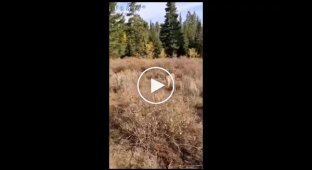Teton Dam Failure - Disaster Live (10 photos + 1 video)
Any disaster associated with a dam break is always fraught with a huge number of casualties. Water is the most destructive force on Earth. Sweeping away everything in its path, it is capable of bringing a lot of destruction and death. Fortunately, such man-made accidents occur infrequently. But when this does happen, the number of victims runs into hundreds, or even thousands, of people. 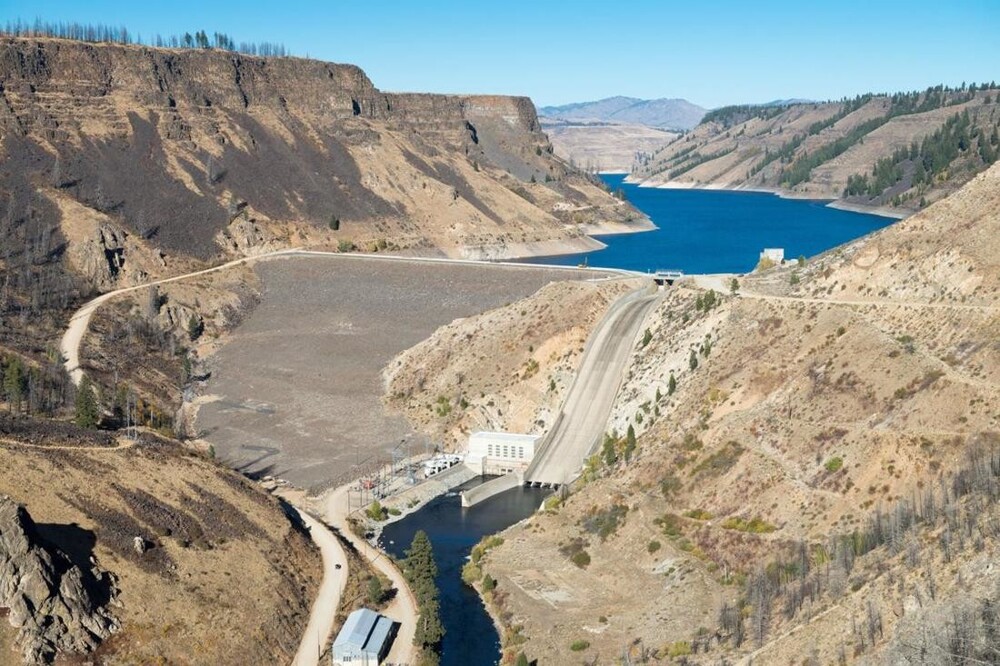
In this regard, the residents of the American state of Idaho were lucky - their dam, called Teton, was destroyed quite slowly, so everyone living in the danger zone was warned. At the same time, many curious people came to see what was happening, and the Teton Dam breach is the only such disaster that unfolded almost live. 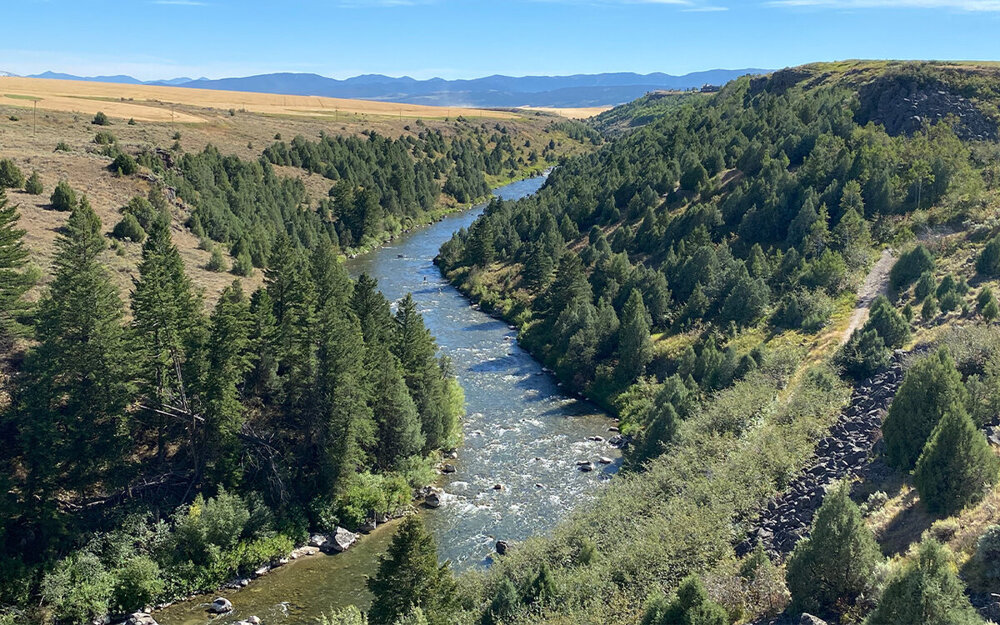
The Teton River in Idaho, which was dammed
Corn and Potato State
The state of Idaho in the USA is a classic “potato” region and the most American wilderness. There are no megacities, and the main population is farmers who grow not only the main component of the national fast food, but also grains, legumes and even grapes. Between the mountains on fertile land there are numerous farms with endless corn fields and even rows of potato bushes stretching somewhere beyond the horizon. There are few people, stunning nature nearby (Grand Teton and Yellowstone national parks), clean air - why not an ideal place to live?
Everyone loves the state of Idaho, but it has one problem - water. No, there are plenty of rivers in the area, because they flow from the nearby mountains. But the trouble is that the stream beds run through deep canyons. And the plateaus located above with fields and farms suffer from drought, and without artificial irrigation they are unsuitable for farming. Therefore, the problem of water redistribution in Idaho has always been very acute. 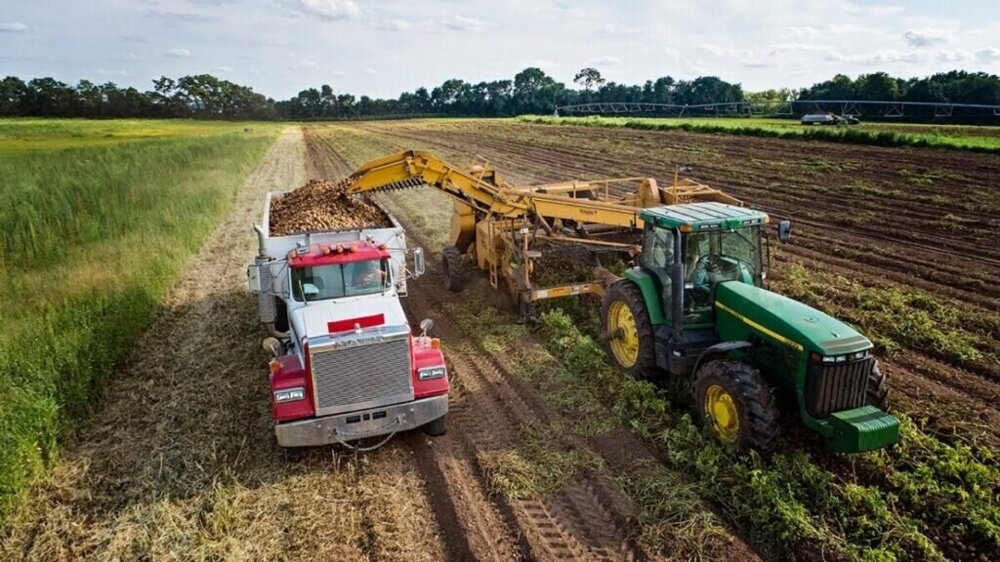
Potato harvesting in Idaho/
The state began building dams and digging canals in the 1920s. Irrigation of land became the main concern of local authorities for a long time. And they dealt with it quite successfully. The eastern part of the state, where the main Snake River flows, was entangled in a network of hydraulic structures. Mainly dams that hold back huge reserves of river water.
Her Majesty Dam
Against this backdrop, the history of the Teton Dam on the river of the same name turned out to be a huge black spot on the state's reputation. After all, it was built not thanks to, but in spite of. Everyone was against blocking the river. Environmentalists talked about climate deterioration. Animal activists predicted the death of trout schools. But the main thing is that geologists pointed out that the rock foundation on which they were going to build an earthen dam was unstable and riddled with cracks. Under certain conditions, they may begin to leak water. But in vain - a building permit was obtained, and work began in 1972. Opponents of the construction filed a lawsuit, but while the proceedings were ongoing, the body of the future dam grew upward. 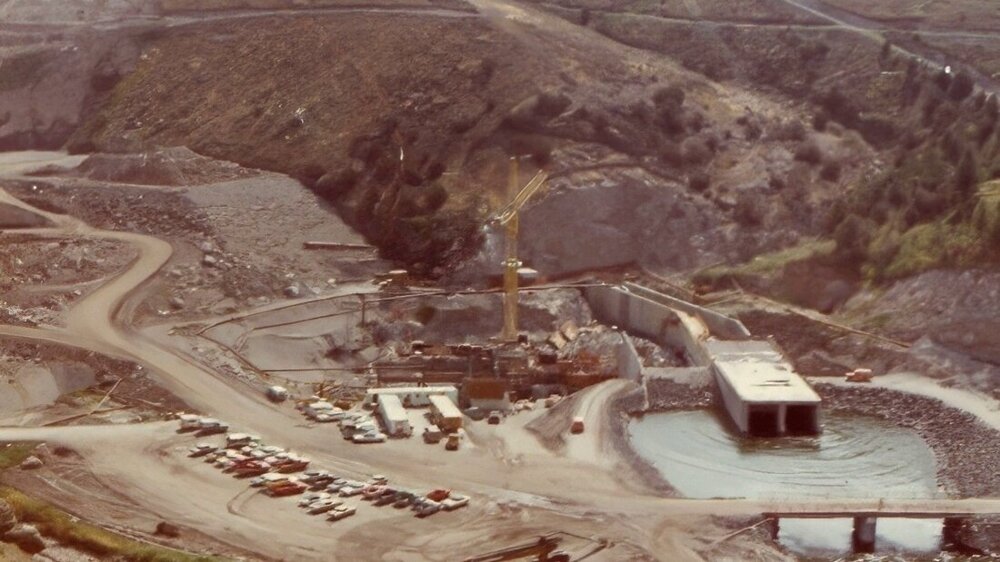
Construction of a dam on the Teton River
The cracks that geologists warned about were sealed with a solution, applying it under high pressure, so the engineers saw no reason for concern. Interestingly, the project included the construction of a blind dam and, in parallel with it, an emergency drainage system. But they planned to start building the main capital drainage after the reservoir was filled.
And so it happened. In November 1975, construction was completed. The Teton River was blocked by a 93-meter earthen dam. Its length was equal to a kilometer, and its width was an impressive 520 meters. Well, can such a monstrous structure be threatened by natural disasters? Of course not, the engineers decided, closed the emergency spillway and began filling the reservoir. This process accelerated after the spring snow melted and began to proceed at a speed of 1.2 meters per day, which was four times higher than the calculated values.
Catastrophe
By the summer of 1976, the depth of the Teton Reservoir was 73 meters, and it stretched as much as 17 kilometers in length. At the same time, work on the construction of the main drainage was still far from complete. But it was never built, because on June 3, at the foot of the dam, builders noticed three sources of seeping water.
A day later there was a leak with a mixture of water and soil. And on the morning of June 5, a large wet spot formed at the site of one of the sources, which beganIt was possible to pass water at a speed of half a cubic meter per second. Here, in the photo below you can see this leak. The brown streak on the left side of the photo is a leak that has formed.

Teton Dam failure. Start
Notice the small dark spot above the brown stripe. This is a Caterpillar D9 bulldozer, which was sent to push soil into the growing ravine. However, this did not help. Here is a photo of the Teton Dam as of afternoon on June 5th.

Teton Dam failure. Continuation
It was at lunchtime that the construction administration notified officials, who called for the urgent evacuation of the local population living in the lower reaches of the river. As for the bulldozers (and two more were later sent to help the first), they got stuck in a wet embankment. Moreover, the drivers had to be rescued using ropes.
The ravine, originally three by three meters in size, reached the size of an average swimming pool and grew larger before our eyes. What was happening at the dam became known to local journalists, who flocked to the observation deck, specially built to observe the progress of construction. Only now the object of their attention is not creation, but destruction, happening right before our eyes.
By the evening of June 5, a fragment of the dam's edge fell down, and two minutes later the entire right third of the dam completely collapsed.
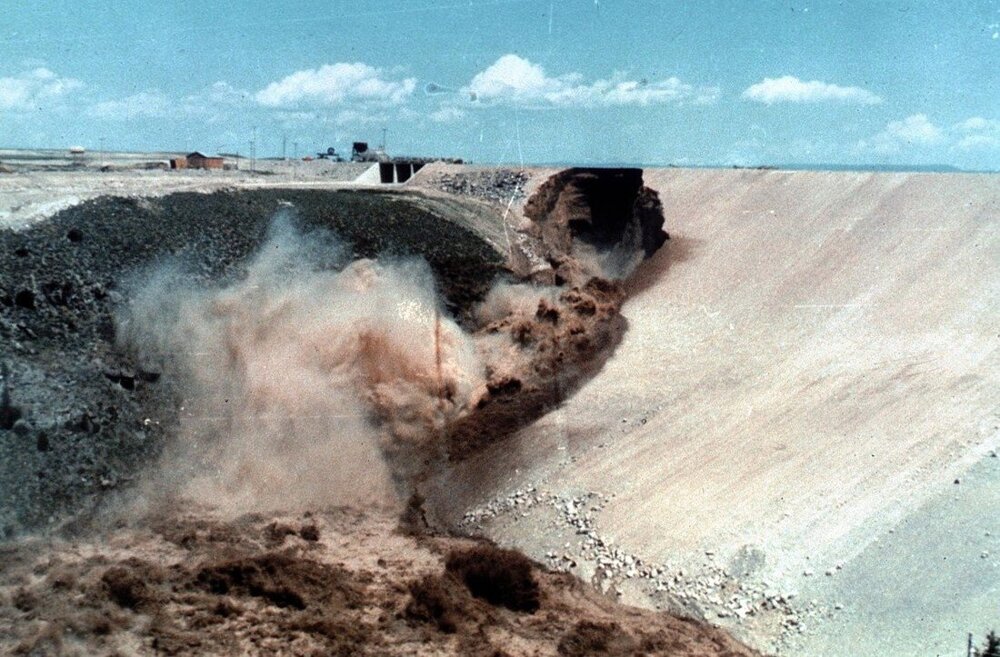
Teton Dam. Climax
A flow of water at a speed of 57 thousand cubic meters per second rushed through the gap into the valley. One of the witnesses standing on the observation deck later said:
A grove of poplars that stood nearby was washed away like matches. Then I saw the stream burst out onto the plain. It was an almost surreal scene as we watched clouds of dust rise above it as water flooded the farmers' fields.

Teton Dam. End/
The greatest danger was the 10-kilometer canyon through which the Teton River flowed behind the dam. It was there that the water that broke free swept through in a crushing wave, destroying everything it could reach. Fortunately, residential settlements along the river (three small villages) managed to evacuate in time.
The canyon ended in a wide valley where the Teton flowed into the Snake River. There stood the city of 20 thousand people, Rexburg, which was almost completely flooded. However, on the plain the wave was no longer so destructive; its power decreased noticeably, and the city residents also managed to be warned. Therefore, significant casualties were avoided. The disaster claimed the lives of 11 people and destroyed many buildings.
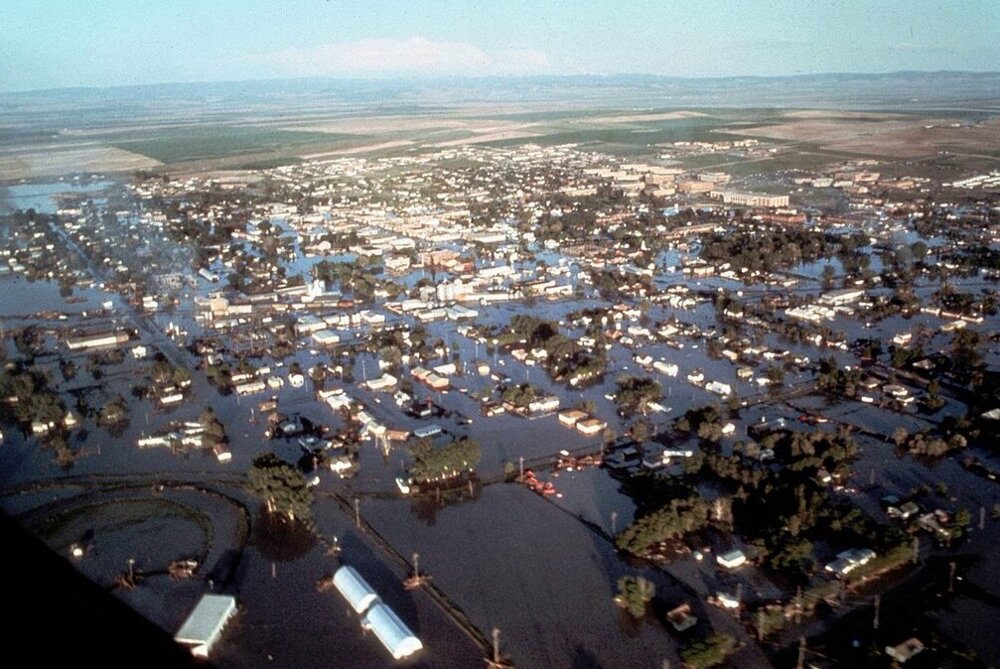
Flooded Rexburg/
Shattered Firmament
The causes of the man-made accident lie on the surface - engineering miscalculations in the design. The foundation of the dam consisted of basalt rocks, and due to their high permeability they are unsuitable for the construction of dams. And although the cracks were sealed with a solution under pressure, it did not help. The water that leaked into the foundation penetrated into the body of the dam, which consisted of loess soil (loamy-sandy rock). Gradually, the water began to wash it away, leading to cracks directly in the body of the dam. Well, the result could not help but happen - it was natural.
It is noteworthy that the commission that investigated the reasons for the dam break did not answer the main question - why, despite all the warnings of specialists, construction became possible at all.
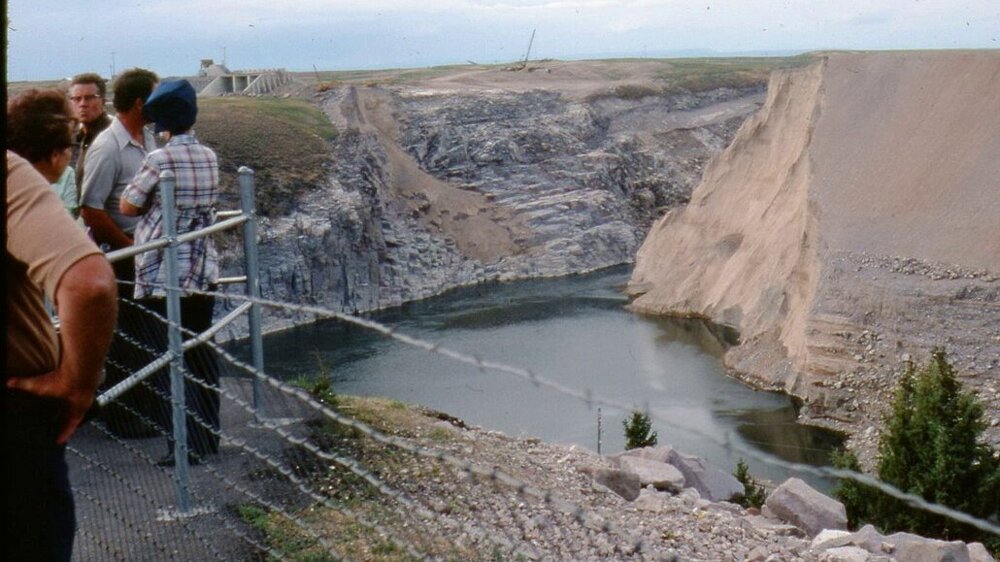
Teton Dam in 2004
The total economic loss was two billion dollars, and the Teton River now flows calmly without artificial regulation. The only losers were local farmers, for the sake of whose prosperity the project was started. This part of Idaho still needs water, but no one is going to restore the dam. It has now become a historical site, the observation deck of which is never empty.













